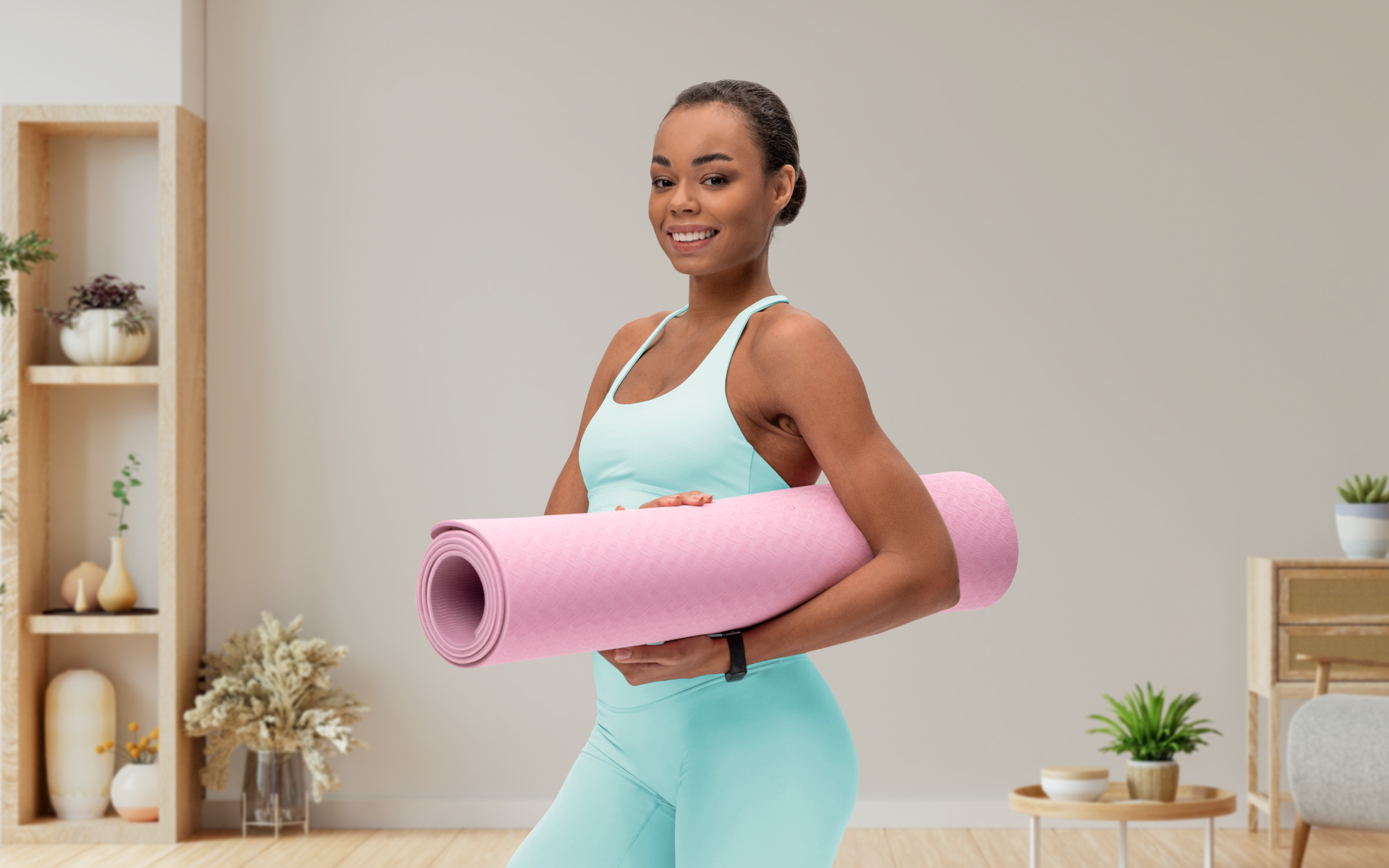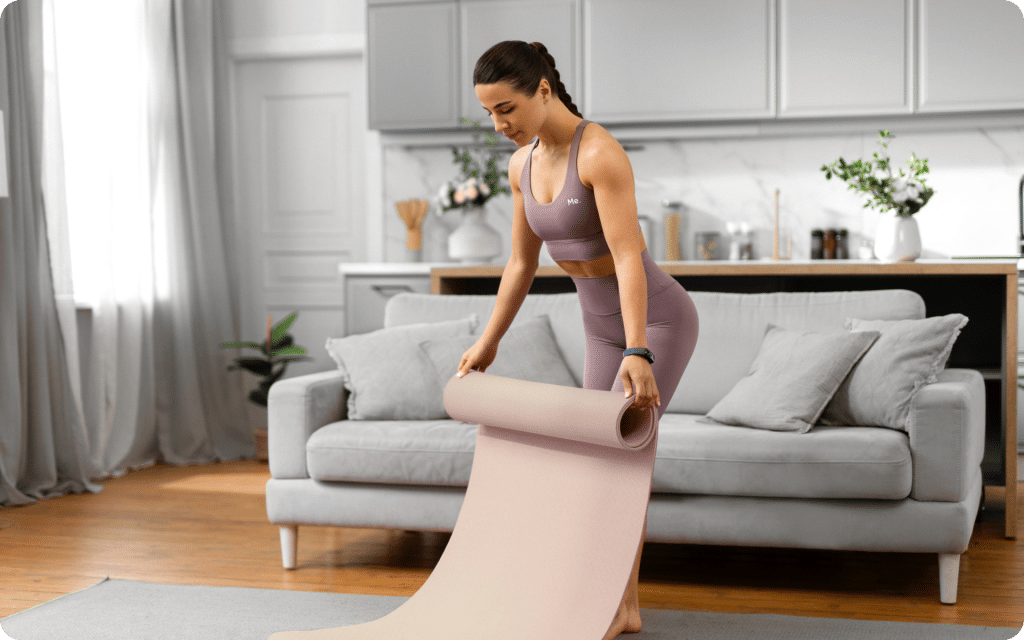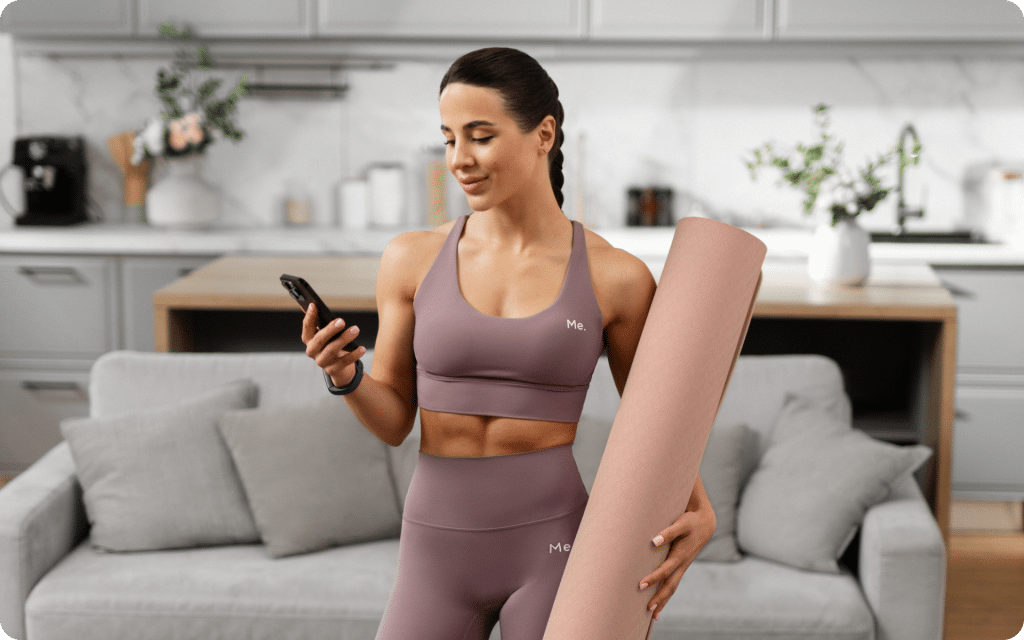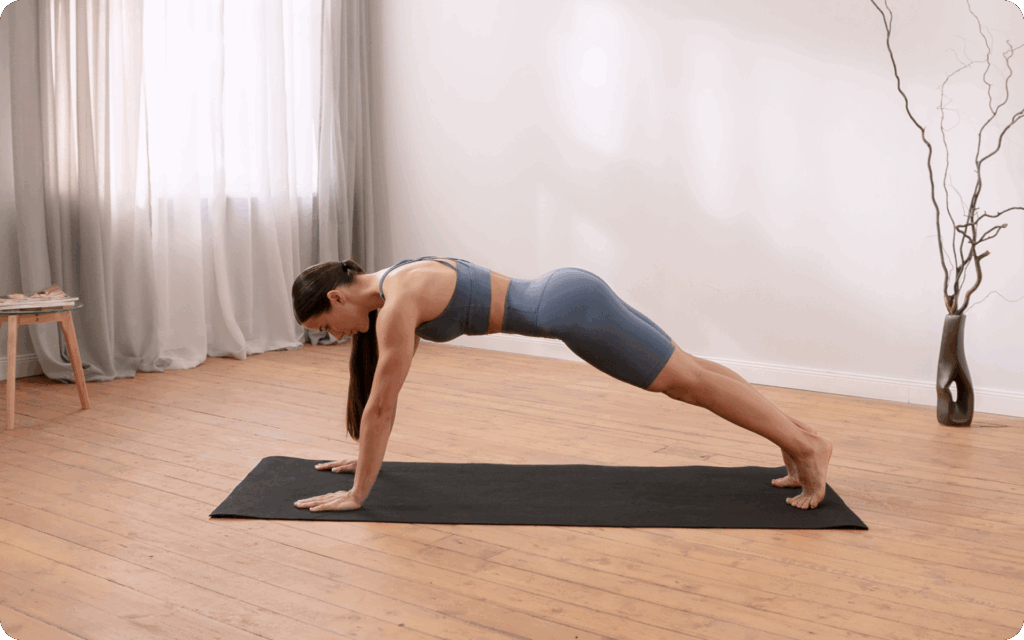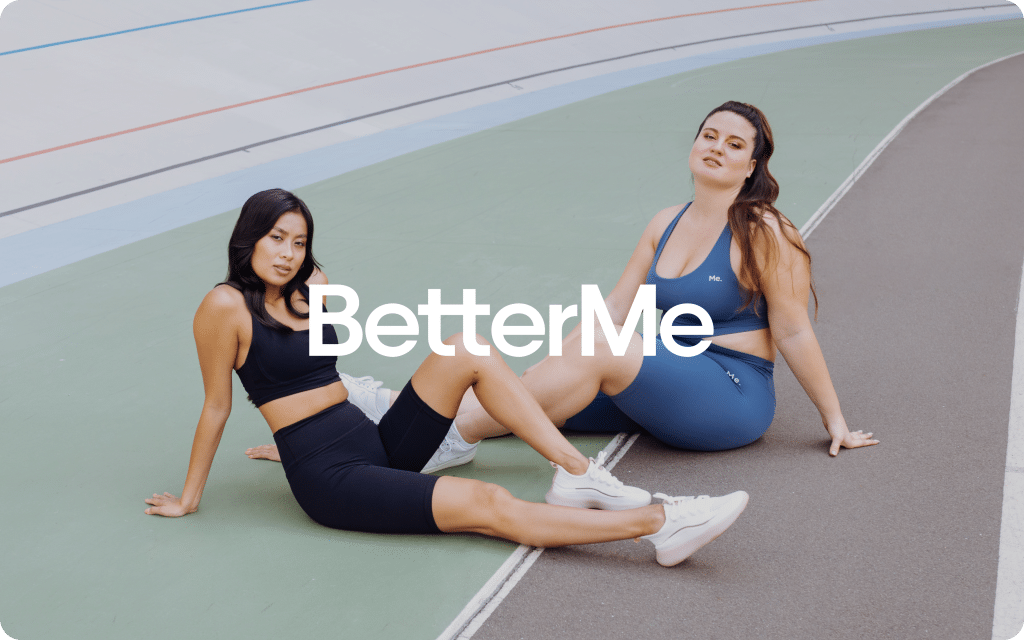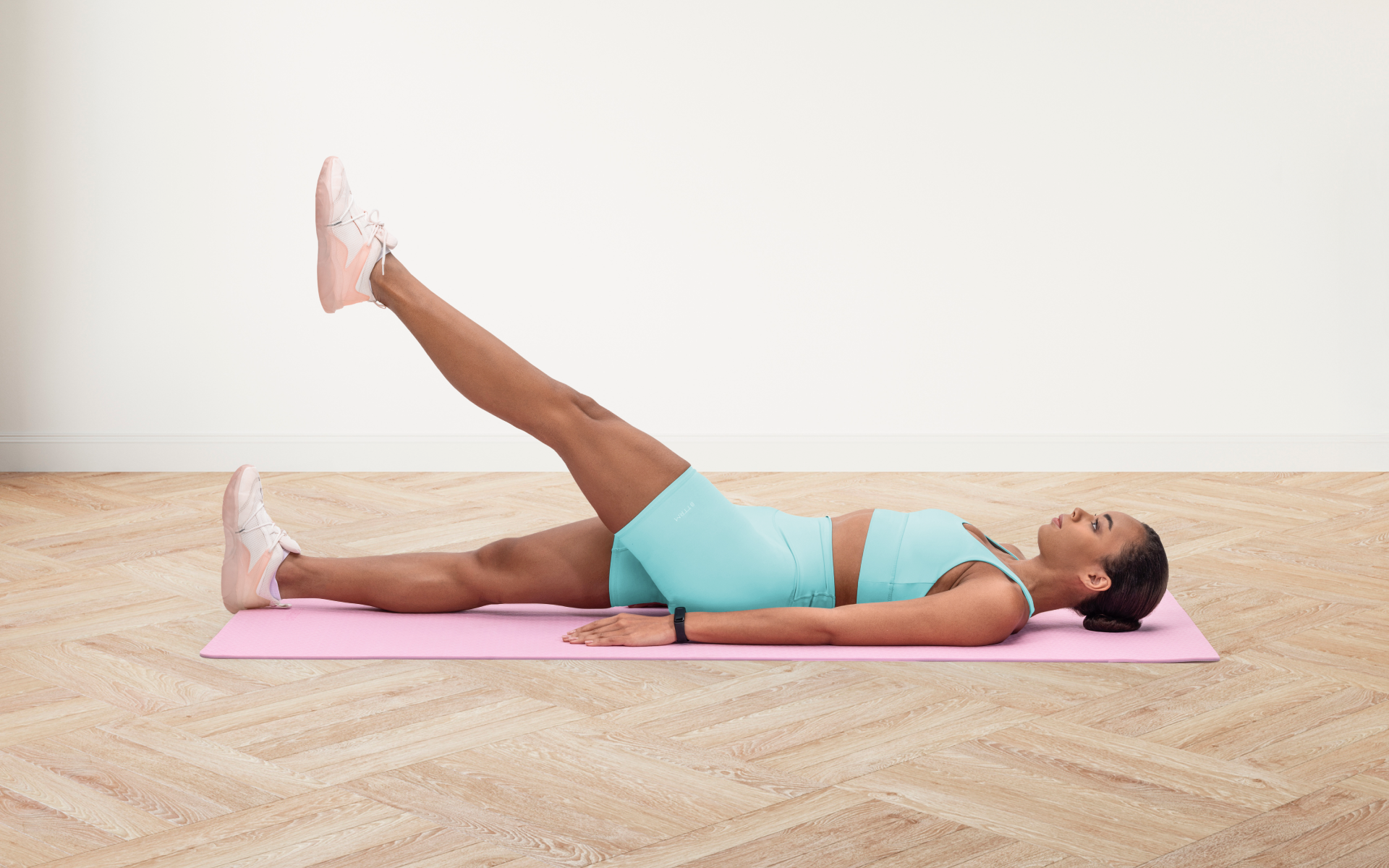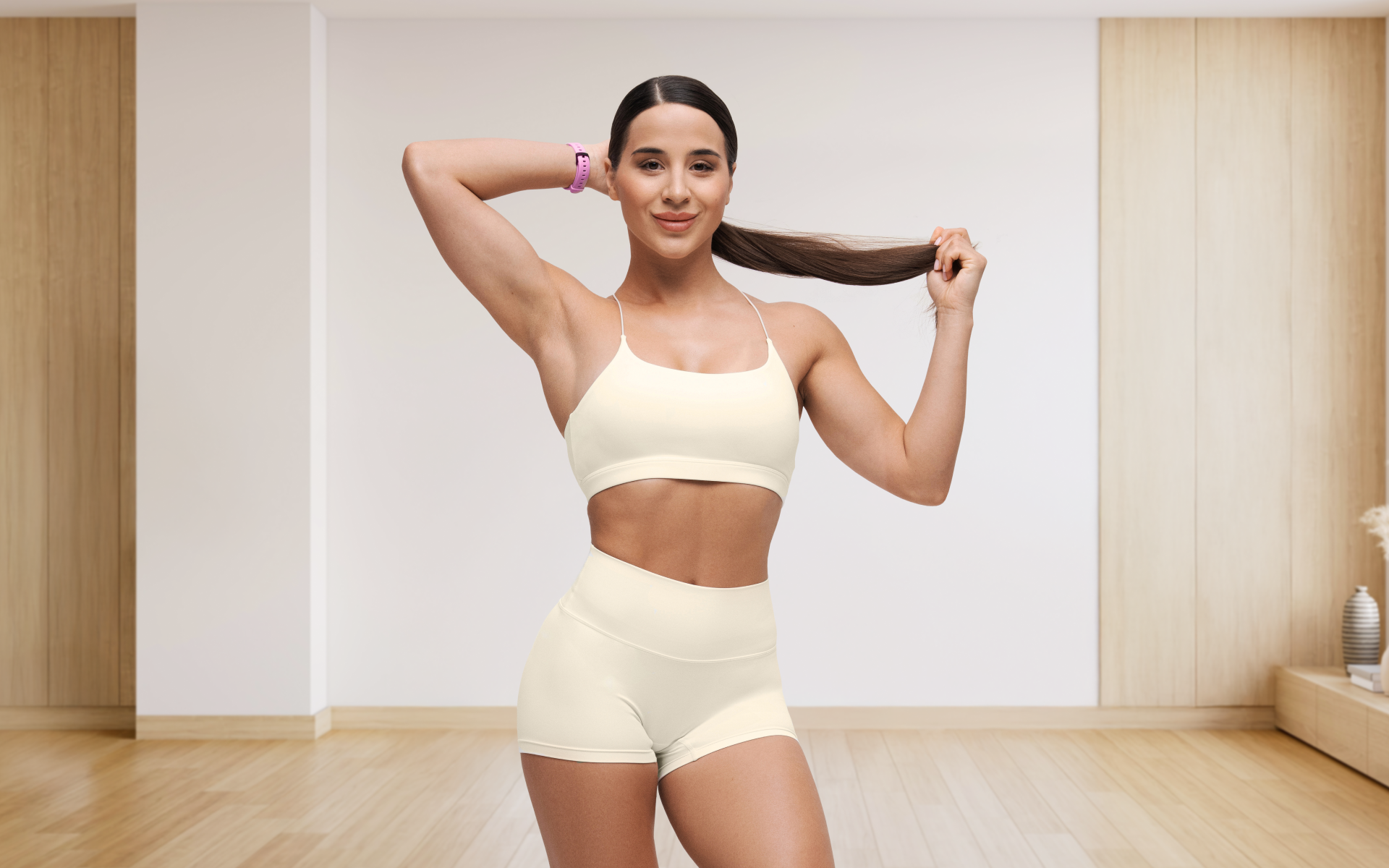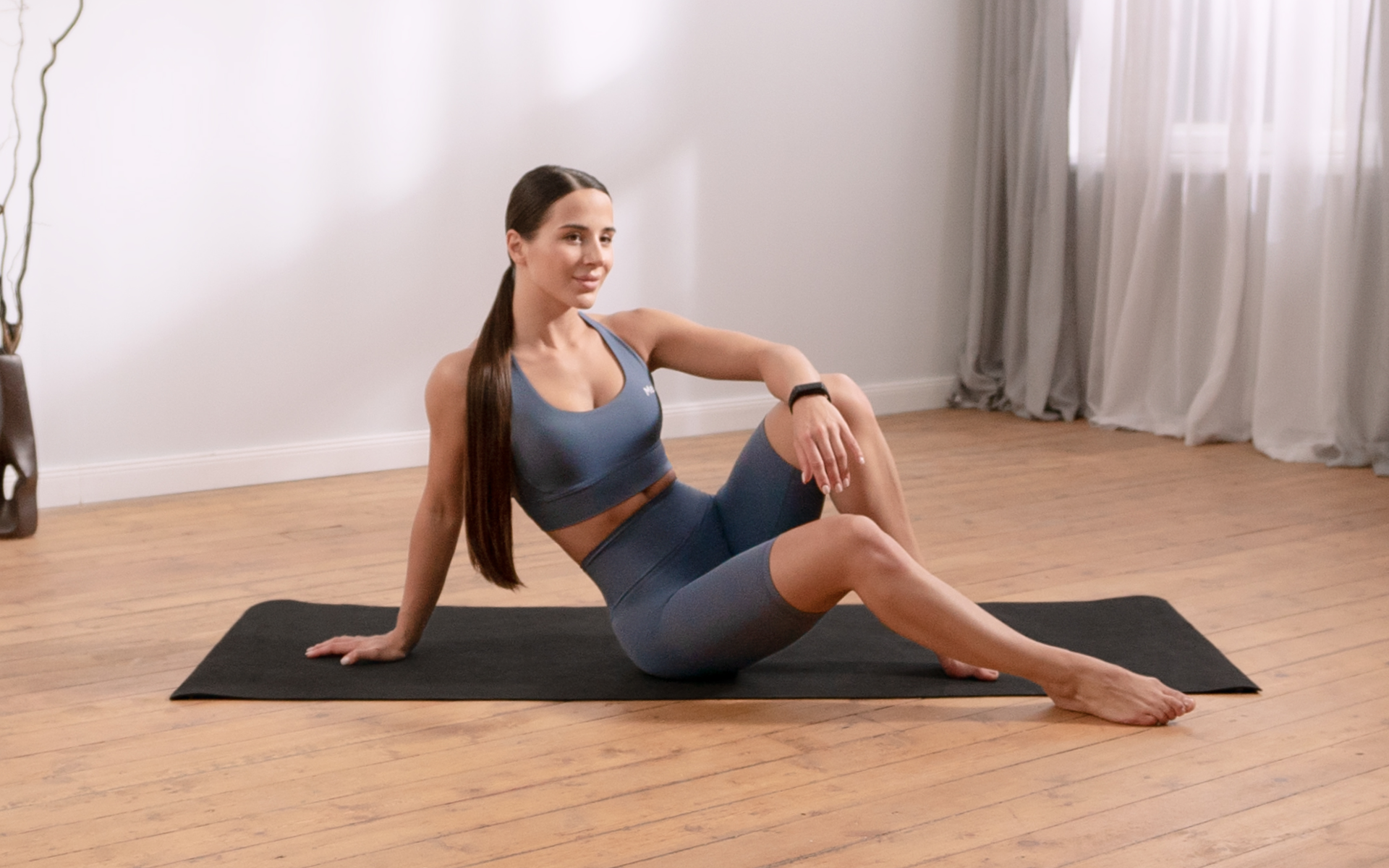Physical fitness is the first requisite of happiness. In his seminal work, Return to Life Through Contrology, Joseph Pilates argued that the strains and stresses of modern life make physical fitness more vital than ever. He proposed a system of exercises, known as Contrology (what we now call Pilates), that could be done right at home to achieve this state of well-being.
This article will explore the effectiveness of Mat Pilates. We will analyze whether it provides a sufficient workout, what specific benefits it offers, and how it can contribute to muscle tone and weight loss.
We will also provide a sample workout plan based on Pilates’ original teachings and discuss a realistic timeline for seeing results.
Is Mat Pilates Enough Exercise?
Yes, Mat Pilates can be a very effective form of exercise (1), but whether it is “enough” depends on your personal fitness goals and how it fits into your overall routine.
To understand this, let’s look at standard exercise recommendations. Health organizations generally recommend that adults get (2):
- At least 150 minutes of moderate-intensity aerobic activity or 75 minutes of vigorous-intensity aerobic activity per week.
- Muscle-strengthening activities on 2 or more days a week that work all major muscle groups (legs, hips, back, abdomen, chest, shoulders, and arms).
Mat Pilates primarily falls into the category of muscle-strengthening activity (3) A vigorous session can also elevate your heart rate, contributing to your aerobic exercise quota (4).
However, to build a truly comprehensive fitness routine that meets all recommendations, it’s often best to pair Mat Pilates with dedicated cardiovascular exercises like running, swimming, or cycling. This combination ensures you strengthen your body while also building cardiovascular endurance (5).
What Is Mat Pilates Effective For?
Joseph Pilates designed his method to be a holistic system for physical and mental well-being. He claimed that Contrology offers a wide range of benefits that are supported by modern physiological findings.
- Develops the Body Uniformly
Pilates exercises are designed to work the entire body in a balanced way, ensuring no muscle group is over-trained or under-trained. This is achieved through controlled, precise movements that engage both large and small stabilizing muscles (1).
The focus on the “powerhouse”—the core muscles of the abdomen, lower back, hips, and buttocks—creates a strong, stable center from which all movement originates. This uniform development helps improve overall strength and functional fitness (1).
- Corrects Wrong Postures
Poor posture is a common side effect of a sedentary lifestyle (6). Mat Pilates directly counteracts this by strengthening the core and improving spinal alignment (7).
Exercises like The Roll Up and The Spine Stretch encourage spinal articulation and lengthen the spine, helping to decompress vertebrae and correct postural imbalances like slouching or forward head posture. A stronger, more aligned body is less prone to the chronic pain associated with poor posture (8).
Whether you’re a workout beast or just a beginner making your first foray into the world of fitness and dieting – BetterMe has a lot to offer to both newbies and experts! Install the app and experience the versatility first-hand!
- Restores Physical Vitality
Do you often feel drained, even after a full night’s sleep? Pilates believed that his method could restore physical vitality by improving circulation and promoting efficient movement (9).
He wrote that Contrology was designed to “properly and scientifically exercise every muscle in your body in order to improve the circulation of the blood.” Better circulation means more oxygen and nutrients are delivered to your tissues, boosting energy levels and combating feelings of fatigue (9).
- Invigorates the Mind and Elevates the Spirit
Pilates is often described as a mind-body exercise, and for good reason. The practice requires intense concentration to execute each movement with precision and control.
This focus on the present moment, combined with coordinated breathing, acts as a form of moving meditation. Pilates noted that this mental engagement could “ease mental strain and relieve physical fatigue.” The result is a feeling of renewed mental vigor and a calmer, more elevated state of mind (9).
Ready to build your foundation? Learn more about pilates basics.
Can I Get Toned with Mat Pilates?
Yes, Mat Pilates is an excellent way to build lean muscle tone (10).
Joseph Pilates’ goal was not to create bulky, “muscle-bound” bodies. Instead, he conceived his method “to limber and stretch muscles and ligaments so that your body will be as supple as that of a cat.”
Mat Pilates achieves this by focusing on eccentric muscle contractions, which occur when a muscle lengthens under tension. Think of the slow, controlled lowering phase of an exercise. This type of contraction is highly effective at building strong muscles without adding bulk (11).
The continuous tension and high-repetition format of many Pilates exercises challenge muscles to work until fatigued, which stimulates muscle fiber growth and leads to a more toned and defined appearance (10).
Read more: 4 Benefits Of Mat Pilates For Body And Mind
Can You Lose Weight by Doing Mat Pilates?
While Joseph Pilates did not position Contrology primarily as a weight-loss tool, it can certainly support your weight-loss journey. He emphasized that proper diet was crucial, stating that “merely eating to satisfy one’s lust for good food is both foolish and dangerous to one’s health.”
BetterMe: Health Coaching app helps you achieve your body goals with ease and efficiency by helping to choose proper meal plans and effective workouts. Start using our app and you will see good results in a short time.
Mat Pilates contributes to weight loss in several ways:
- Calorie Burn: A typical Mat Pilates session can burn between 90 -115.8 calories per hour, depending on the intensity (12). While this may be less than high-impact cardio, it still contributes to the calorie deficit needed for weight loss (13).
- Increased Metabolism: Building lean muscle mass through Pilates increases your resting metabolic rate. This means your body will burn more calories throughout the day, even when you are at rest (14).
- Mindful Eating: The mind-body connection fostered by Pilates can extend to other areas of your life, including your eating habits. The discipline and awareness cultivated on the mat may help you make more mindful food choices (15).
Pilates also suggested targeting specific areas. If you have “an accumulation of excess fat,” he recommended selecting exercises that specifically address those areas and repeating them throughout the day.
That said, we know that weight loss is primarily driven by a calorie deficit (13), which is what happens when you consistently burn more calories than you consume. So, a calorie controlled diet combined with regular exercise which may include mat Pilates, will likely lead to weight loss.
Looking for core-specific routines? Discover our top mat exercises for abs.
What Is an Effective Mat Pilates Workout Plan?
An effective Mat Pilates workout engages all the major muscle groups with a focus on core strength, flexibility, and control. Joseph Pilates outlined 34 original mat exercises in Return to Life. Here is a sample program inspired by his work.
- The Hundred
- Lie on your back with your knees bent, feet on the floor, and arms by your sides.
- Inhale to prepare. Exhale, lift your head and shoulders off the mat, and extend your legs to a 45-degree angle.
- Inhale and pump your arms up and down for a count of five. Exhale and continue pumping for a count of five.
- Repeat this breathing pattern for a total of 100 pumps.
- The Roll Up
- Lie on your back with your legs straight and your arms extended overhead.
- Inhale as you lift your arms toward the ceiling.
- Exhale as you slowly roll your spine up and off the mat, one vertebra at a time, reaching toward your toes.
- Inhale to hold the stretch. Exhale as you slowly roll back down to the starting position.
- Repeat 5-8 times.
- The One Leg Circle
- Lie on your back with one leg extended toward the ceiling and the other flat on the mat.
- Inhale as you cross the extended leg over your body.
- Exhale as you circle the leg down, out to the side, and back to the starting position.
- Keep your hips stable and anchored to the mat.
- Perform 5 circles in each direction, then switch legs.
- The Swan-Dive
- Lie on your stomach with your hands under your shoulders.
- Inhale as you press up, extending your spine into an arc. Keep your hips on the mat.
- Exhale and rock forward onto your chest, lifting your legs behind you.
- Inhale to rock back up onto your hands.
- Continue this rocking motion for 3-5 repetitions before slowly lowering down.
- The Push Up
- Start in a high plank position with your hands directly under your shoulders.
- Inhale as you lower your body toward the mat, keeping your elbows close to your sides.
- Exhale to press back up to the starting position.
- After the push-up, walk your feet toward your hands, rolling up through the spine to stand.
- Roll back down, walk your hands out to a plank, and repeat. Perform 3-5 repetitions.
Want more exercises you can do at home? Explore these floor mat exercises.
How Long Does It Take to See a Difference?
Joseph Pilates made a bold promise: “If you will faithfully perform your Contrology exercises regularly only four times a week for just three months… you will find your body development approaching the ideal, accompanied by renewed mental vigor and spiritual enhancement (16).”
This timeline—seeing significant results in three months—is realistic for many people. However, you will likely notice smaller changes much sooner. After just a few weeks, you may feel stronger, stand taller, and move with more grace.
The key, as Pilates emphasized, is consistency. He reminded his students that “Rome was not built in a day,” and that patience and persistence are vital. Commit to your practice, and you will see the rewards.
Read more: How to Lose Weight with Pilates: Complete Guide and Sample Workout
Neither is definitively “harder” as both offer various levels of difficulty. Mat Pilates often emphasizes muscular control and core strength through precise, repetitive movements, which can be very challenging. Yoga typically focuses more on flexibility and holding static poses, which requires a different kind of strength and endurance. The difficulty depends on the specific style, class, and instructor. Yes, research suggests that mind-body practices like Pilates can help lower cortisol levels. The focus on deep, controlled breathing and mindful movement helps activate the parasympathetic nervous system, which promotes relaxation and reduces the physiological effects of stress, including the production of the stress hormone cortisol (17). No single exercise can spot-reduce fat and “flatten” your stomach. A flat stomach is the result of low overall body fat and strong abdominal muscles. While Pilates exercises like The Hundred and The Teaser are excellent for strengthening the deep core muscles (like the transversus abdominis), achieving a flat stomach requires a comprehensive approach that includes a healthy diet and regular cardiovascular exercise to reduce body fat. Pilates cannot “get rid of” cellulite, which is caused by fat deposits pushing through the connective tissue beneath the skin. However, by building lean muscle mass and improving circulation, Pilates can help reduce the appearance of cellulite and create a smoother, more toned look in the legs and buttocks.Frequently Asked Questions
Is mat pilates harder than yoga?
Does Pilates lower cortisol?
What exercise flattens your stomach the most?
Does Pilates get rid of cellulite?
The Bottom Line
Mat Pilates, as envisioned by its creator, is a powerful system for transforming the body and mind. It develops uniform strength, corrects posture, and invigorates your entire being.
While it is most effective as part of a balanced fitness routine, its benefits for building lean muscle, supporting weight loss, and enhancing mental clarity are undeniable. By committing to a consistent practice, you can unlock the physical fitness that Joseph Pilates believed was the first requisite of happiness.
DISCLAIMER:
This article is intended for general informational purposes only and does not serve to address individual circumstances. It is not a substitute for professional advice or help and should not be relied on for making any kind of decision-making. Any action taken as a direct or indirect result of the information in this article is entirely at your own risk and is your sole responsibility.
BetterMe, its content staff, and its medical advisors accept no responsibility for inaccuracies, errors, misstatements, inconsistencies, or omissions and specifically disclaim any liability, loss or risk, personal, professional or otherwise, which may be incurred as a consequence, directly or indirectly, of the use and/or application of any content.
You should always seek the advice of your physician or other qualified health provider with any questions you may have regarding a medical condition or your specific situation. Never disregard professional medical advice or delay seeking it because of BetterMe content. If you suspect or think you may have a medical emergency, call your doctor.
SOURCES:
- Efficacy of Pilates in Functional Body Composition: A Systematic Review (2022, mdpi.com)
- 2020 WHO guidelines on physical activity and sedentary behavior (2021, sciencedirect.com)
- Pilates – health benefits (2022, betterhealth.vic.gov.au)
- Pilates Method Improves Cardiorespiratory Fitness: A Systematic Review and Meta-Analysis (2019, mdpi.com)
- Is the Combination of Aerobic Exercise with Mat Pilates Better than Mat Pilates Training Alone on Autonomic Modulation Related to Functional Outcomes in Hypertensive Women? Secondary Analysis of a Randomized Controlled Trial (2022, mdpi.coM)
- Sedentary lifestyle and physical inactivity: A mutual interplay with early and overt frailty (2025, sciencedirect.com)
- Effects of Pilates on Body Posture: A Systematic Review (2024, pubmed.ncbi.nlm.nih.gov)
- Assessing the Impact of Prolonged Sitting and Poor Posture on Lower Back Pain: A Photogrammetric and Machine Learning Approach (2024, mdpi.com)
- Benefits of Pilates on Depression, Anxiety, and Stress: An Observational Study Comparing People Practicing Pilates to Non-Active Controls (2025, mdpi.com)
- The effects of mat Pilates exercise and barrel Pilates exercise on body composition and muscle activity in adult women (2025, sciencedirect.com)
- Effect of different eccentric tempos on hypertrophy and strength of the lower limbs (2021, pmc.ncbi.nlm.nih.gov)
- What is the exercise intensity of Pilates? An analysis of the energy expenditure, blood lactate, and intensity of apparatus and mat Pilates sessions (2021, pubmed.ncbi.nlm.nih.gov)
- Fat Loss Depends on Energy Deficit Only, Independently of the Method for Weight Loss (2007, karger.com)
- Increasing muscle mass to improve metabolism (2013, pmc.ncbi.nlm.nih.gov)
- Mindful eating: what we know so far (2022, onlinelibrary.wiley.com)
- PILATES’ Return to Life Through Contrology (n.d., books.out.csli.me)
- The effect of pilates training on hormonal and psychophysical function in older women (2022, pubmed.ncbi.nlm.nih.gov)
